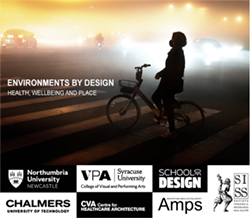ISSN (online): 1996-1944
Call of the Journal:
- Advanced Carbon Materials in Water Treatment or Separations Technology
- Advanced Functional Hybrid Materials for Novel Biomolecular Electronics
- Advances in Biomaterials | Design, Synthesis, Characterisation and Biomedical Application
- Advances in Construction and Building Materials
- Advances in Green Construction Materials
- Assessment of Metallurgical and Mechanical Properties of Welded Joints via Numerical Simulation and Experiments
- Carbon Compounds-Reinforced Ceramics
- Concrete and Waterproofing Materials | Development of Waterproofing Technology for Buildings and Civil Concrete Structures
- Corrosion Inhibitors for Steel | Experimental and Theoretical Studies
- Damage and Failure of Polymers, Polymer-Like Materials, Adhesives and Polymer Nanocomposites
- Development of Energy Storage or Conversion Element Based on Various Nano Materials
- Dyes | Synthesis, Properties, and Applications
- Dynamic Behavior of Ceramic Composites
- Flexible Sensors and Actuators for Novel Wearable Solutions
- Fundamentals and Applications of Bionano Sensor Techniques
- Graphene Foam Based Composites
- Growth and Application of Foam-Based Materials
- High Performance Concrete
- Hybrid Noble Metal/Graphene Aerogels | Synthesis, Characterization and Applications for Chemical Sensing and Biosensing
- Hydrogen Storage and Fuel Cells | Materials, Characterization and Applications
- Load Test and Numerical Analysis on Construction Materials
- Machining and Surface Properties of Steel Parts
- Materials under Extreme Conditions | Technologies for CRMs Reduction, Substitution and Recovery
- Microplastics and Nanoplastics | From Resource to Pollution
- Mineral-Bonded Composites for Enhanced Structural Impact Safety
- Modification and Processing of Biodegradable Polymers
- Nanostructured Semiconductors for Photoinduced Applications
- Novel Inorganic Adsorbents for Environmental Purification
- Numerical Simulation and Experimental Studies of Wave Phenomena in Composite Materials
- Performance Research of Polyurethane Foams and Composites
- Physics, Electrical and Structural Properties of Dielectric Layers
- Precision and Ultra-Precision Subtractive and Additive Manufacturing Processes of Alloys and Steels
- Processing and Thermal Properties of Hybrid Composites
- Recent Advances in 3D Printing for Biomaterials
- Recent Progress in the Development, Material Properties, and Post-Processing of Additively Manufactured Components
- Silica and Silica-based Materials for Biotechnology, Polymer Composites and Environmental Protection
- Study on the Modification and Compressive Properties of Concrete Buildings Materials
- Superconductors for Opto-Nano and Micro-Electro-Mechanical Systems (O-N/MEMS)
- Synthesis and Characterization of Hybrid Nanomaterials and Nanocomposites
- Synthesis, Properties and Applications of Polymer Blends
- Testing of Materials and Elements in Civil Engineering
- The Science and Technology of 3D Printing
Jan
2021
Feb
2021
We would like to invite you to contribute a short communication, full article or review to this Special Issue, entitled “Advances in Biomaterials: Design, Synthesis, Characterisation and Biomedical Application”. Biomaterials that interface with biological systems are used to prevent, detect and treat disease; to deliver drugs safely and efficiently; to support the body as it heals; and to engineer functional tissues outside of the body for organ replacement. In recent years, the research topic has progressed beyond simply selecting materials that were initially designed for other engineering applications with a primary focus on properties that enabled restoration of function and mitigation of acute pathology. Biomaterials are now realistically designed with controlled architecture and dynamic functionality to enable integration with biological complexity and achieve tailored, high-level functions in the body. The changeover has been from the use of biomaterials that are merely tolerated by the body to promoting biomaterials that are no longer bioinert but bioactive and bioresponsive. This viewpoint takes into account recent developments in the field of hard and soft biomaterials, with a specific emphasis on advances in multiscale control, static to dynamic functionality, hierarchical biocomplex materials (e.g., cellular and composite architectures, adaptive growth, and as well as remodelling) and innovative manufacture techniques to enable patient-specific device performance. The focus of this Special Issue will provide the community with the opportunity to present the latest fundamental and applied biomaterials research to the broader materials community. Materials publishes manuscripts which advance the in-depth understanding of the relationship between the structure, properties and functions of all kinds of materials and covers all aspects of biomaterials research across the pipeline of design, synthesis, characterisation and application. This Special Issue will also facilitate the important interactions between the biomaterials community and the broader materials communities.
Keywords: Biomaterials; Polymers; Metals; Ceramics; Composites; Design; Synthesis; Characterisation and testing; Manufacturing processes; Additive manufacturing; Biomedical application; Structure-property relationships; Surface modification; Cell-material interaction; Host response; Medical devices; Drug delivery systems; Tissue engineering; Regenerative medicine.
Advances in Biomaterials | Design, Synthesis, Characterisation and Biomedical Application
We would like to invite you to contribute a short communication, full article or review to this Special Issue, entitled “Advances in Biomaterials: Design, Synthesis, Characterisation and Biomedical Application”. Biomaterials that interface with biological systems are used to prevent, detect and treat disease; to deliver drugs safely and efficiently; to support the body as it heals; and to engineer functional tissues outside of the body for organ replacement. In recent years, the research topic has progressed beyond simply selecting materials that were initially designed for other engineering applications with a primary focus on properties that enabled restoration of function and mitigation of acute pathology. Biomaterials are now realistically designed with controlled architecture and dynamic functionality to enable integration with biological complexity and achieve tailored, high-level functions in the body. The changeover has been from the use of biomaterials that are merely tolerated by the body to promoting biomaterials that are no longer bioinert but bioactive and bioresponsive. This viewpoint takes into account recent developments in the field of hard and soft biomaterials, with a specific emphasis on advances in multiscale control, static to dynamic functionality, hierarchical biocomplex materials (e.g., cellular and composite architectures, adaptive growth, and as well as remodelling) and innovative manufacture techniques to enable patient-specific device performance. The focus of this Special Issue will provide the community with the opportunity to present the latest fundamental and applied biomaterials research to the broader materials community. Materials publishes manuscripts which advance the in-depth understanding of the relationship between the structure, properties and functions of all kinds of materials and covers all aspects of biomaterials research across the pipeline of design, synthesis, characterisation and application. This Special Issue will also facilitate the important interactions between the biomaterials community and the broader materials communities.
Keywords: Biomaterials; Polymers; Metals; Ceramics; Composites; Design; Synthesis; Characterisation and testing; Manufacturing processes; Additive manufacturing; Biomedical application; Structure-property relationships; Surface modification; Cell-material interaction; Host response; Medical devices; Drug delivery systems; Tissue engineering; Regenerative medicine.
ADS-Astrophysics Data System, AGORA(FAO), CAB Abstracts(CABI), Chemical Abstracts (ACS), Current Contents-Engineering, Computing & Technology (Clarivate Analytics), DOAJ, Ei Compendex/Engineering Village (Elsevier), Genamics JournalSeek, Global Health (CABI), HINARI (WHO), Inspec (IET), Journal Citation Reports/Science Edition (Clarivate Analytics), Julkaisufoorumi Publication Forum (Federation of Finnish Learned Societies), Norwegian Register for Scientific Journals, Series and Publishers (NSD), Polymer Library (Smithers Rapra), PubMed (NLM), Science Citation Index Expanded – Web of Science (Clarivate Analytics), Scopus (Elsevier), Web of Science (Clarivate Analytics), Zetoc (British Library), CLOCKSS (Digital Archive), e-Helvetica (Swiss National Library Digital Archive), PubMed Central (NLM), Academic OneFile (Gale/Cengage Learning), EBSCOhost (EBSCO Publishing), Energy & Power Source (EBSCO), Engineering Source (EBSCO), Google Scholar, J-Gate (Informatics India), Materials Science & Engineering (ProQuest).
Info at: www.mdpi.com/journal/materials/apc
Guest Editors
Prof. Dr. Nicholas Dunne
Dr. Tanya Levingstone
Prof. Dr. Helen McCarthy










